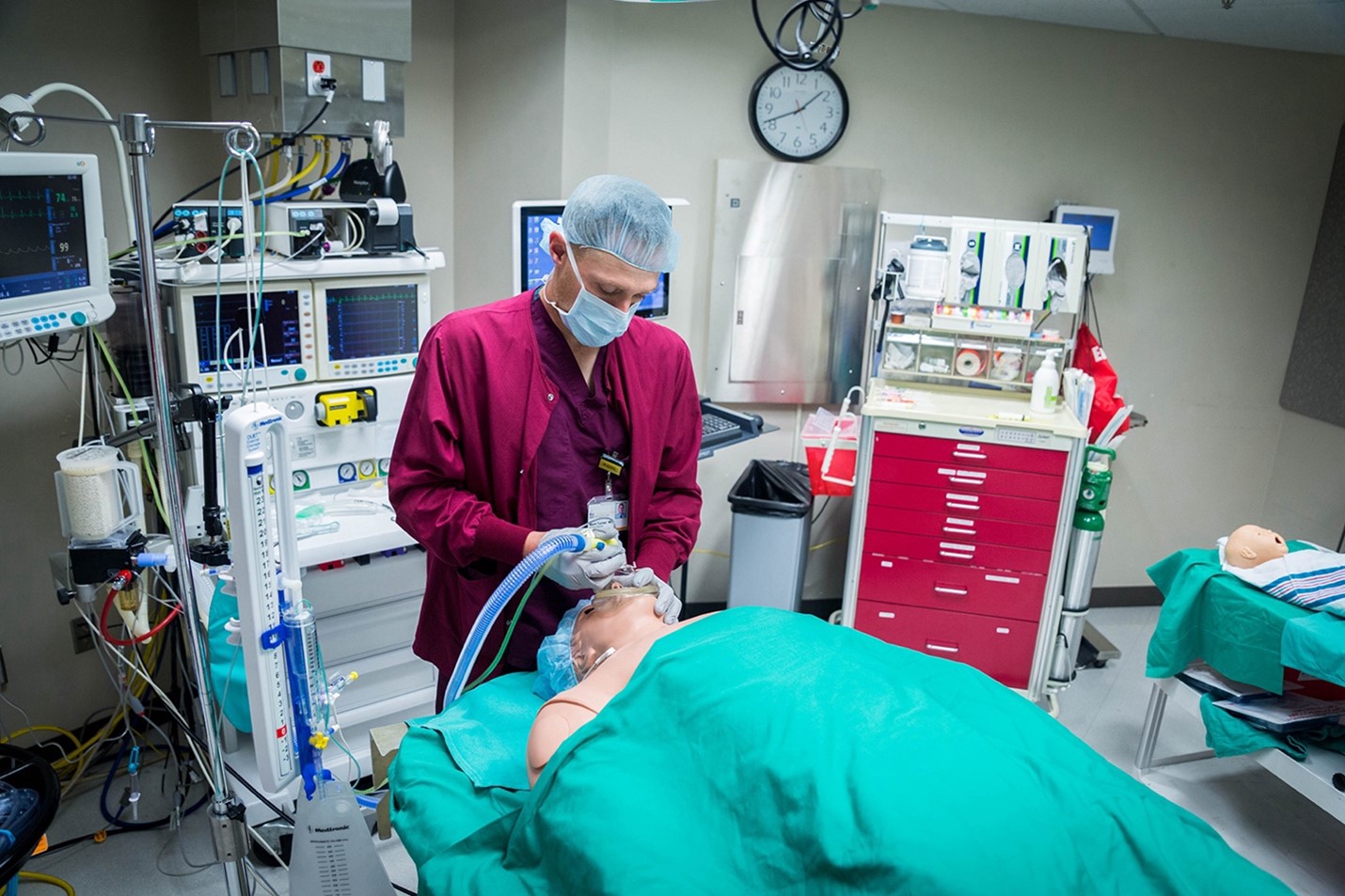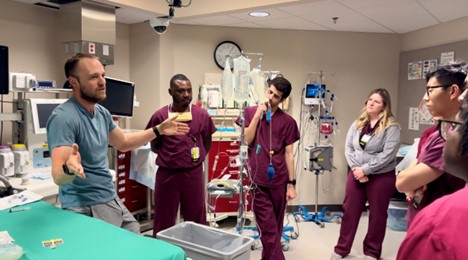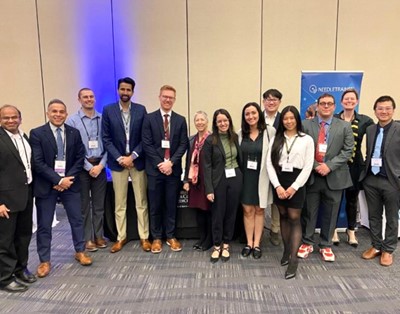Teaching Opportunities for Residents
Residents are involved with teaching on many levels. They teach each other (seniors teach more junior residents, particularly on call). They teach residents from other departments (orthopedics, otolaryngology, oral surgery, pediatric dentists, emergency medicine, etc.), medical students, and EMT students who are rotating in anesthesia.
In addition to the clinical teaching, there are many opportunities for residents to give demonstrations, participate in workshops and simulations, and make presentations to physicians and allied health personnel (during the internship and the clinical anesthesia years). CA3 residents are expected to make an educational presentation to the interns during the Advanced Clinical Medicine Rotation in May/June.
Focus on Readiness for Independent Practice
Through the three-year residency, trainees are gradually given more independence and autonomy with OR cases and procedures. Senior residents in the SNICU/CVICU have responsibility for patient triage, mentoring junior residents and managing patients (especially on nights or weekends, as faculty take call from home). The senior elective in Des Moines (cardiac anesthesia) offers CA3 residents more autonomy.
Finally, we have a required senior rotation, TIPS (Transition to Independent Practice). Residents are assigned to this one-month rotation in their CA3 year. This rotation is aimed at preparing residents for the day-to-day role of an anesthesiologist. Each CA-3 is assigned to 2 rooms of junior residents, in which they are expected to act as the attending anesthesiologist—assisting with induction and intubation, present for emergence and extubation, and available for any questions or emergencies throughout the case. The TIPS resident also assists the other team members with patient preparation, obtaining informed consent, communicates with the OR day coordinator, and provides breaks for the team members. Faculty anesthesiologist input/patient management is kept to the minimum necessary for patient safety and medical/legal documentation. Staff are always present when medically necessary for patient safety. This rotation has been wildly successful, offering CA3 residents the most independence and autonomy, as well as the opportunity to work with other residents during the day.
Evaluation of Resident Performance
There are several aspects to resident performance evaluation. First, faculty evaluate resident performance on a regular basis.
Faculty use the six ACGME core competencies to evaluate performance:
Patient care and procedural skills
Medical knowledge
Professionalism
Interpersonal and communication skills
Systems-based practice
Practice-based learning and improvement
Feedback is provided verbally (directly to the resident) and through electronic questionnaires. The performance evaluation is submitted electronically to the program director (approximately daily).
Residents evaluate other residents (peer evaluations) with respect to communication and professionalism (SNICU/CVICU, OB and trauma/nights). Nurses evaluate residents (professionalism and communication) when they rotate through the pain clinic and post-anesthesia care unit. Finally, patients evaluate residents (professionalism) in the pain clinic.
In addition to faculty, peer, and nurse evaluations, residents get feedback on their performance by taking the In-Training Exam each year. Residents also receive feedback through participation in practice oral exams twice per year.
Residents evaluate the faculty, rotations, and the program on a regular basis. This confidential evaluation process is in place to make us all better–we strive for excellence in ourselves and our trainees. There are multiple platforms through which residents can provide feedback, whether anonymous or not, whether individualized or general. These evaluations are used to improve the strength of teaching, effectiveness of communication, and quality of patient care.



